Florida: Multiracial Elementary Schools Become Violent Hells for Our Children
One can easily read through the few shreds of code language still left in this establishment media report; the destruction of our once-safe schools is too obvious to hide now
SALIMAH BULLOCK started second grade at Campbell Park Elementary in the fall of 2013. She didn’t make it 10 minutes before a classmate punched her in the face. (ILLUSTRATION: Lakewood Elementary principal Cynthia Kidd talks with students.)
Every day after that brought new threats.
“They cursed at me, called me ugly and threatened to put their hands on me,” Salimah said.
Just months later, the 8-year-old got caught between two boys fighting.
She left school that day in an ambulance.
Salimah’s story speaks to a jarring reality: In Pinellas County’s most segregated elementary schools, violence has become a part of daily life.
A Tampa Bay Times investigation has found that incidents of violence and disruption have soared as district leaders neglected programs meant to make the schools safer.
At Campbell Park, Fairmount Park, Lakewood, Maximo and Melrose, children like Salimah have been shoved, slapped, punched or kicked more than 7,500 times since 2010 — the equivalent of eight times a day, every day, for five years straight.
Times reporters spent a year taking an unprecedented look at safety in the five schools, reviewing hundreds of thousands of discipline records and police reports, and found:
■ Last year, there were more violent incidents at the five elementary schools than in all of the county’s 17 high schools combined
■ Incidents at the schools have more than doubled since 2010, even as other schools in Pinellas saw a drop in violence.
■ For years, district leaders gave the schools the same number of employees to handle eight times the amount of violence faced at other elementary schools. Teachers at the schools describe calling for help in their classrooms only to be ignored because no one was there to respond.
■ Teachers are overwhelmed. Many said they had little training and no idea how to get students under control. More than half the teachers at the schools requested transfers in 2014. Several have been taken away in ambulances after suffering panic attacks or being injured by their students.
■ Until recently, district officials under-reported serious incidents to a state clearinghouse that tracks dangers in the classroom — an apparent violation of state law that made the schools seem safer than they really were.
Violence went on a steep rise a year after the School Board abandoned integration in 2007.
That decision, coupled with years of neglect, transformed the schools into five of the worst in Florida, the Times reported in the first installment of this series.
It also concentrated the county’s poorest students in a small number of schools, leaving teachers and principals to be overwhelmed.
“I don’t know if the district really understands what the behaviors are there and how extreme they can get,” said Jenna Strickland, who taught kindergarten at Lakewood from 2008 to 2014. “The district doesn’t have any idea of what’s really going on at these schools.”
At Campbell Park, a second-grader threatened to kill and rape two girls while brandishing a kitchen knife he carried to school in his backpack.
At Fairmount Park, a 9-year-old hit a pair of kindergartners in the head with a souvenir baseball bat.
At Maximo, a group of kindergartners pinned a classmate down on the playground, pulled off her pants and fondled her.
On the day Salimah was hospitalized, there had already been more than 1,100 violent incidents at the schools in 2013-14. The experience left her mother, Tammy Bullock, so disturbed that she moved the family back to Philadelphia. She said she would rather take her chances in that city’s public school system than remain in St. Petersburg.
“I’ve never seen anything like this in my whole life,” Bullock said of Campbell Park. “It led me to believe that God didn’t want my family in Florida.”
In interviews with the Times, principals at the schools described dealing with alarming behavior.
“I do see an increase of kids doing things that you would not think happens in elementary schools,” said Lakewood principal Cynthia Kidd. “It’s hard to imagine, when you’re not here every day.”
They said hiring and keeping motivated teachers is a constant challenge and that training them in how to control their classrooms is critical.
“You can’t teach anything without classroom management,” said Campbell Park principal Robert Ovalle.
But the principals also said most students at their schools are safe. And they point to a recent decline in violent incidents as evidence that they’re on the right track.
Last year, teachers and principals at the schools wrote about 1,900 referrals for violent behavior, which includes fighting and striking another student. That’s down from more than 2,400 the year before. Maximo saw referrals drop from 1,068 to 254 in the same period.
In an interview with the Times, superintendent Mike Grego said he took stock of how schools were managing behavior when he was hired in 2012.
He said he discovered that the district lacked a plan to guide teachers in how to respond to behavior problems.
“It’s a prime example of trying something five, six, seven years ago and just letting it kind of, I’ll say, fizzle out, fade away,” Grego said.
Last year, Grego made improving the schools a “major focus,” adding staff and teacher training sessions.
“There’s been no lack of urgency in terms of the investment and the time and the staff development,” Grego said. “It is on our agenda on a regular basis.”
One former teacher was unconvinced.
Lovell Blue, who left Melrose last year, said School Board members feel little pressure to fix the problem.
When needy students are concentrated in the poorest neighborhoods, middle-class parents don’t have to confront the problems associated with poverty, Blue said.
“They don’t have to deal with these low-income black kids coming into their schools, bullying their kids,” said Blue, who is black and who also has taught at Lakewood and Campbell Park. “It’s not a problem for them anymore. They’re satisfied with how it is.”
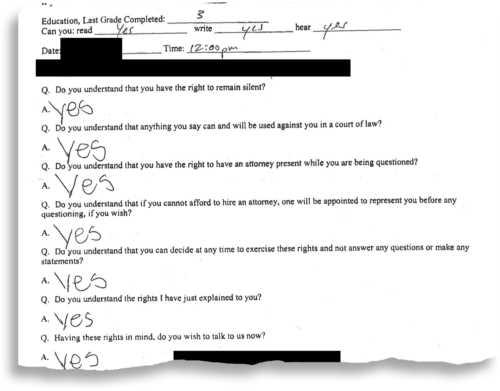
Dangerous Places
Every year, the Pinellas County School District collects tens of thousands of records on misbehaving students.
Using public records laws, the Times obtained a database of more than 800,000 referrals written between 2009 and 2015. Then, in a first-of-its-kind review, Times reporters analyzed the records to compare the district’s elementary schools.
Teachers and administrators at the five schools wrote up students about 21,000 times in the past five years. More than 40 percent of the referrals were categorized by the district as violent incidents. Most of those were for students caught striking other students.
It is impossible to tell from school district records how violent the attacks were. Students and teachers say most incidents amount to minor scuffles, not bloody confrontations.
But in dozens of cases uncovered by the Times, students threatened to kill one another, committed sex assaults, drew blood, broke bones or sent one another to the hospital.
At Maximo in 2012, an 11-year-old repeatedly harassed a female classmate, telling her he wanted to have sex with her. Then he threatened to kill them both so they “could be married in hell,” according to a police report.
The next year, at the same school, a 10-year-old was slapped, punched, choked, body-slammed, stomped and kicked in the face in a cafeteria fight over a Lego action figure.
At Campbell Park in 2010, a second-grader took a 6-inch, serrated kitchen knife to school and told classmates he was going to stab a girl in the back because she liked another boy.
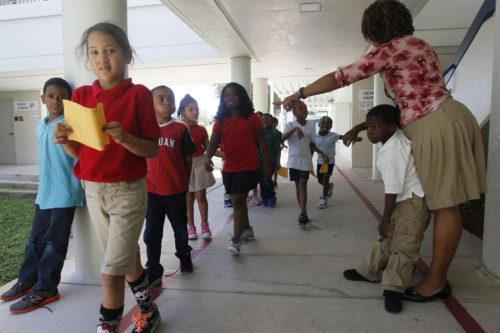
Teachers, too, are regularly punched, kicked, shoved and groped by elementary school students.
On a single day at Fairmount Park in 2009, two teachers were injured by students in separate incidents. The first teacher, a thin-framed 58-year-old woman, was slammed into a door. The second was beaten in the ankle with a heavy wooden doorstop.
Loretta Evans was hurt even worse than that.
A 50-year-old substitute at Campbell Park, Evans was trying to break up a fight between two girls in 2014 when one of them pushed her down a flight of stairs, she said. She was driven away in an ambulance and hospitalized for a torn thigh muscle.
“We had a very rough fifth-grade class,” Evans said, recalling her time at the school. “They were always pushing each other around.”
Evans finished the rest of the year using a walker, afraid every day of being attacked again. She hasn’t worked since.
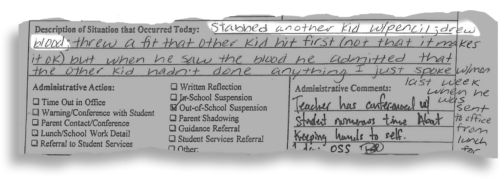
Constant Stress
The effects of disruptive behavior and violence reach beyond just the children involved.
Classmates who cause no trouble lose out on valuable instruction time if teachers are constantly acting as disciplinarians.
Students who might otherwise behave in class start to pick up bad behaviors and become less likely to learn.
Decades of research have shown that misbehavior is contagious, said Marc Atkins, director of the Institute for Juvenile Research at the University of Illinois at Chicago.
If disruptive behavior becomes the norm, Atkins said, “You want to be a part of that group. You don’t want to be a victim.”
And a mounting body of evidence shows that a daily drumbeat of bullying creates high levels of stress, which can affect a student’s health and ability to concentrate, said Dr. Matthew Biel, director of Child and Adolescent Psychiatry at Georgetown University.
“Even if you’re not being beaten daily, if you have been beaten, or if you’re in an environment where that seems like it might be imminently possible, the effects that that has on you as a child are profound,” Biel said. “And the effects are biological. They impact physical health, mental health and the ability to learn.”
Kids like Allana Crawford have suffered amid the stress of going to Melrose.
Tormented by a handful of girls about her weight, her shoes, her family, how she wore her hair, the second-grader at Melrose saw her grades steadily slipping in 2014.
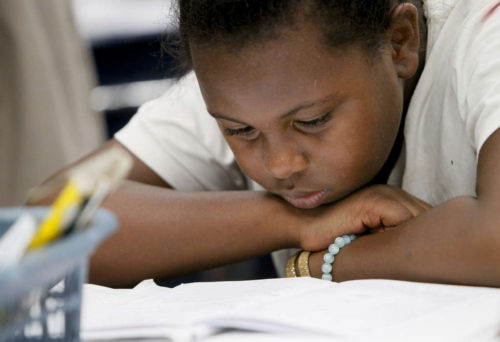
One day after school, the 7-year-old sought a way to make it end, said her mother, Candice Billingsley.
She stepped off the sidewalk into the car line and lay down on the asphalt. “I don’t want to live anymore,” she told a school employee.
That’s when Billingsley decided she had to get her daughter out.
Soon after, they got lucky: They were approved for subsidized housing in Largo.
The family moved to a neighborhood zoned for better schools. Allana ended up in C-rated Ridgecrest Elementary.
Today, the little girl is on the honor roll.

Basic Steps Not Taken
In 2007, School Board members approved sweeping changes to school attendance boundaries.
They decided to abandon decades of racial integration efforts in favor of neighborhood schools.
Ahead of the vote, parents, teachers and community leaders predicted schools would suffer in south St. Petersburg. The decision, they said, would concentrate the county’s neediest children at a handful of schools, where counselors and specialists would quickly be overwhelmed.
“We are getting ready to dump some problems into south county,” the board’s sole black member, Mary Brown, said before the vote. “We need more counselors. We’re going to need more social workers, more psychologists. Where’s the funding going to come from?”
In public meetings, the other board members and district leaders promised to send extra money and staff to the schools, even if it meant giving other schools less.
“We need to look at some of the educational initiatives and what we can do to serve students at our schools that are under-served or are struggling,” Peggy O’Shea said before voting for the plan. “And there are things we can do. There are things that are going on now, and there are things that we can plan to do in the future to assist that.”
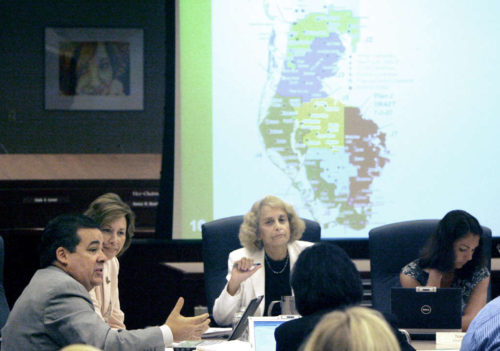
Here’s what really happened: Until 2012, board members and district administrators left the schools with the same basic resources as they had before, even as discipline problems increased.
Many school districts across the nation have taken aggressive steps to curb disruptive behavior, including hiring security experts to draft safety plans at high-risk schools.
And though there is no single solution to fit every school, experts agree there are basic steps districts can take: train teachers to spot trouble and calm rowdy students; hire more counselors and behavior experts to respond to problems; and add security officers taught to build relationships with students.
In Pinellas, they gave the five schools the same staffing as other far less violent schools.
In 2013-14, more than 60 elementary schools started the year with the same number of guidance counselors as the five schools.
More than 25 schools started that year with one behavior specialist. That’s the same staffing as at Campbell Park, Maximo and Melrose and better than at Fairmount Park and Lakewood — which had none.
District leaders understaffed the five schools for years.
It wasn’t until last year that they added extra counselors and specialists. As part of a plan to improve the schools, Grego steered them social workers, psychologists, mental health therapists and “navigators” to connect families with help outside the district.

‘He Wants to Kill Us’
Lacking training and without extra support, teachers often make up solutions as they go along. Sometimes that leads to questionable decisions.
Elyse Mermelstein faced a daunting situation at Lakewood in November 2013, when a troubled new boy started in her first-grade class.
In his first week, the boy made a list of people he planned to kill and named Mermelstein at No. 8, she recalled.
“The first day, my kids came in in the morning saying, ‘He wants to kill us!’ ”
Mermelstein said. “They were crying and freaking out, rightfully.
“I asked the kid, point blank, ‘What’s going on?’ A lot of the kids were scared. I said, ‘Are you going to kill us?’ He said, ‘I don’t think I’m doing it now,’ ” Mermelstein said.
The next day, her students came to her again, “but this time they’re saying, ‘He’s got a gun!’ ” she said.
Not sure how to react, Mermelstein made the children sit by the door, apart from the boy with the kill list. Quietly, she told them that if he pulled a weapon, they needed to run from the room as fast as they could.
Then she moved to the other side of the classroom and, rather than call for help, talked to the boy until her classroom aide came on duty — about 45 minutes later.
After the aide ushered the boy to the office, school staff opened his bag and looked inside. He was carrying a toy gun.
Mermelstein’s classroom was equipped with an intercom call button that day, but she said she knew better than to push it.
“It often took 30 to 40 minutes to get the office to come and help,” Mermelstein said.
No classrooms in Pinellas County have panic buttons. But that’s changing, district officials said.
As part of a plan to update intercom and communications systems, 11 schools are getting emergency buttons that will alert principals, secretaries, resource officers and school police to problems in classrooms.
None of the schools in south St. Petersburg are in line for the upgrade.
Among the schools that did make the list: A-rated Ozona Elementary, where teachers last year wrote about 35 referrals for bad behavior.
The district is installing emergency call systems in schools based on the age of their intercom systems, officials said, not on how safe the schools are.
Campbell Park, Fairmount Park, Lakewood, Maximo and Melrose should get panic buttons within five years, they said.

Undercounting Incidents
Ten-year-old Myles Bradley was eating lunch in the cafeteria when the other student came at him swinging.
He slapped Myles in the face and put him in a chokehold. Dragged him out of his chair, threw him to the floor and punched him three times. Then he straightened up and started kicking Myles in the face. He was stomping Myles again and again when a cafeteria worker stepped in and pulled him away.
The attack was serious enough that the school principal called St. Petersburg police.
To the officer who drove to Maximo that day, Oct. 5, 2012, the incident was a battery. He forwarded the case against the young assailant to the state attorney’s office, records show.
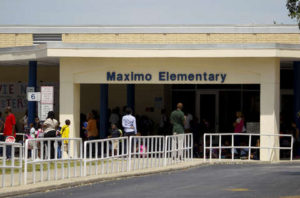 But administrators required to record it in Florida’s mandatory incident reporting system coded it as a “campus crime” — a subsection of a discipline category called “other.”
But administrators required to record it in Florida’s mandatory incident reporting system coded it as a “campus crime” — a subsection of a discipline category called “other.”
It isn’t the only example of the district mishandling the reporting of school violence in the past 10 years.
Since 1995, Florida law has required districts to report basic information about serious incidents that occur on school grounds. The reports allow the state to keep tabs on violence and crime in schools.
But when Times reporters compared Pinellas County’s internal discipline records with numbers the district sent to the state, they found the district was under-reporting incidents in a way that made the five schools appear safer than they really were.
Of the thousands of discipline referrals issued at the schools over the past five years, the district determined that more than 550 met the standard required for reporting to the state, district records show.
But the district actually reported fewer than half that number.
For the school year that ended in spring of 2011, the district flagged 76 serious incidents at Melrose. It reported zero incidents to the state.
Lakewood reported three serious incidents to the state in 2009-10. The Times found seven noted in district records.
Campbell Park reported 12 incidents in 2011-12. The Times found 32.
In 2012-13, Fairmount Park reported 16 incidents. The Times found 41.
District spokeswoman Melanie Marquez Parra blamed the discrepancies on district employees who were using a computer program incorrectly.
The district updated the software in the 2013-14 school year, she said, and accuracy has improved.

Fix Left to Languish
When 7-year-olds threaten to rape and kill one another and 10-year-olds throw punches unprovoked, it’s almost always a sign of how tough they have it at home.
High-poverty neighborhoods like those in south St. Petersburg have higher rates of substance abuse and child neglect, which can lead to children who misbehave in extreme ways, said Jason Gold, an assistant professor of pediatrics at the Institute for the Study of Child Development at Rutgers University.
Faced with children who molest one another and fight constantly, it’s not enough to call parents, hand out suspensions and hope for the best.
“They came to school wanting to fight, wanting to kill each other, every day,” said Blue, the former Melrose teacher. “I called the parents. They said they’d whip them or beat them or whatever. They would come back and act the same way.”
In 2007, the Pinellas County School District committed to a new way of improving student behavior and increasing safety.
Working with experts at the University of South Florida, the district would train teachers to identify children for help before their behavior got out of control.
Florida’s Positive Behavior Supports Project drew from nationally recognized best practices that have been embraced by districts across the country.
When the program is done right, teachers are happier, children are punished less harshly and they do better in school, Heather Peshak George, the program’s co-director, said in an interview with the Times.
But after signing on to the program, district officials let it languish.
A series of superintendents, including Clayton Wilcox and Julie Janssen, never put an administrator in charge full time.
Schools were left on their own, with no one to monitor how teachers were trained or whether they followed program outlines for helping students with behavior problems.
As teachers quit or retired, no one made sure their replacements learned to follow the program.
USF got so frustrated with the district in 2014 that project leaders called a tense meeting and threatened to pull support.
“You will get nothing until you build the infrastructure,” George told district officials then.
In response, Grego appointed a manager to oversee the program countywide.
By summer 2014, the district hadn’t offered training in positive behavior supports for at least five years. Since then, the district has held seven training sessions.
Those led to a dramatic drop in referrals for misbehavior, said Parra, the district spokeswoman.
Many teachers told the Times they had no idea how the program was supposed to work.
Rose Robbins taught in Melrose in the fall of 2013. She said the behavior program was talked about occasionally, but she never saw it in action.
“I can’t recall the meetings occurring. I think we talked about a few of the students, and how nothing had been done, and maybe getting them a psychological evaluation,” Robbins said.
Desperate to reduce behavior problems at his school in 2014, Campbell Park principal Robert Ovalle used $35,000 from the school’s own budget to hire trainers. He said he had no choice because so many of the roughly 40 teachers at his school were rookies.
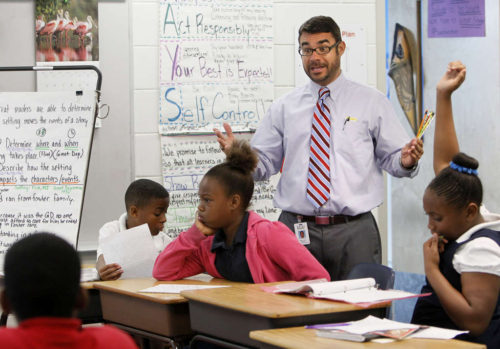
“I hired 29 brand-new teachers out of college,” Ovalle said. “They take maybe one class on behavior and then most of these new teachers are getting jobs in schools like Campbell Park.
“That’s like taking one course and being expected to overhaul an engine.”
Referrals for violent incidents at the school dropped from about 500 in 2013-14 to about 300 in 2014-15, records show.
Other schools have had to rely on their own behavior plans, drawn up in isolation so that they vary wildly from one place to the next.
Fairmount Park’s 2013-14 plan encouraged teachers to give disruptive students the “evil eye” as a first strategy to combat misbehavior.

Fending for Themselves
The Times interviewed two dozen instructors who have worked in the five schools. Most described feeling helpless.
“Teachers would cry in front of students, in their classrooms,” said Jennifer Butkus, who taught journalism in Melrose and a nearby middle school between 2005 and 2013. “It was a concentration of behavior problems that made it very difficult for teachers to do their jobs, even veteran teachers.”
Some teachers suspended students repeatedly, only to have the children return to disrupt class again.
Others called police or had children committed to a mental health center under Florida’s Baker Act, which empowers police to detain anyone deemed a threat to themselves or others.
In 2013, a 6-year-old kindergartner at Fairmount Park was committed twice in two weeks for throwing temper tantrums, according to police reports.
In a few cases, teachers resorted to even more desperate measures.
On May 4, 2009, at Fairmount Park, a child with cerebral palsy began screaming and thrashing. Rather than deal with him herself, his instructor sent him to a classroom for disruptive kids run by teacher Jerilyn Brown.
Confronted with the still out-of-control boy, Brown called the front office for help about 10 a.m. Thirty minutes passed before any help arrived, according to district police reports.
When an assistant principal and a behavior specialist got to the classroom, they found the door barricaded from the inside with a heavy piece of furniture.
When they got inside, they found that Brown and her assistant had tied the disabled child to a wooden chair.
His nose was running and his face was covered in drool. Balled up tissue lay at his feet, unused.
Reached by the Times, Brown said she tied the boy down because he was flailing wildly and in danger of hurting himself. She said she only made the decision after calling repeatedly for help.
“I was afraid he was going to break an arm or something,” said Brown, who now is teaching at Kings Highway Elementary in Clearwater. “I did it to protect the child.”
School district police officers showed up about an hour later to investigate the incident. Assistant principal Nicole DiBenedetto told the officer that she had heard the call for help but was too busy dealing with other incidents to answer it.
The child’s first teacher, the one who sent the boy to Brown’s classroom, had little idea of how she was supposed to handle his behavior, police concluded. She said she didn’t bother to call the front office for help because “they either don’t show or don’t do anything,” according to district police reports.

Hard Choices
Many parents who send their children to the neighborhood elementary schools in south St. Petersburg are constantly anxious. They worry their children will be hurt. They worry the bad behavior will rub off on their kids.
Kaheima Williams hopes her son doesn’t get hurt again, like he did when a classmate swung a chair into his face at Campbell Park.
Karen Rarick prays that her daughter won’t again be groped by a classmate.
Alicia Davis wondered at the swear words her son came home saying as a kindergartner at Fairmount Park.
Ermarie Otero couldn’t sleep for worrying over her son.
Otero and her husband moved their family from Kissimmee to St. Petersburg three years ago to be close to All Children’s Hospital.
The plan was to send their younger child, who had suffered brain damage in a car crash, to regular therapy sessions while they enrolled their older child, Ivan, in public schools.
Ivan started third grade at Campbell Park in 2012.
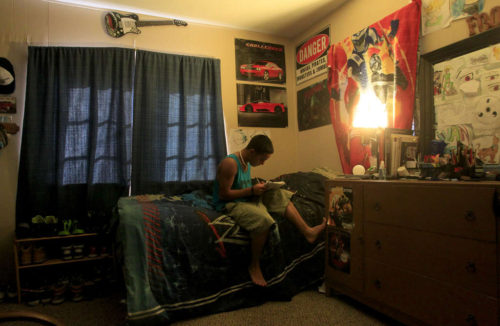
Right away, kids from the neighborhood started picking on him, Otero said. The stories he brought home made his mother sick with worry until, on a Tuesday in April, she got the phone call she had been dreading: Ivan had been hurt in a fight.
According to police, he was eating lunch in the cafeteria when a classmate tried to slam his head into the table. Then the other boy punched him in the face repeatedly.
After that, Ivan’s grades slipped. The 11-year-old didn’t want to go to school anymore.
His mother said she felt torn between doing what was best for her disabled child and keeping her oldest child safe.
“I cried every day,” Otero said. “I even got dreams. One time I had a dream that somebody came with a knife and stabbed my son with it at the school.”
Wracked by anxiety, Otero and her husband faced an unthinkable choice at the end of the year: Move farther north where Ivan was assured a safer public school or remain in the south, where his brain-damaged brother could keep getting regular treatments.
They decided to move to Largo.
“It was hard,” Otero said. “I sacrificed some things to give the best to my other son.”
Now about to turn 14, Ivan goes to Clearwater Intermediate, where he is working to recover the grade level he lost.
For his brother, the drive from Largo means the disabled boy only gets a fraction of the therapy sessions he used to get. But Otero said she knows she made the right choice.
“I thank God,” she said, thinking of Ivan. “Because right now we are in a good position.”
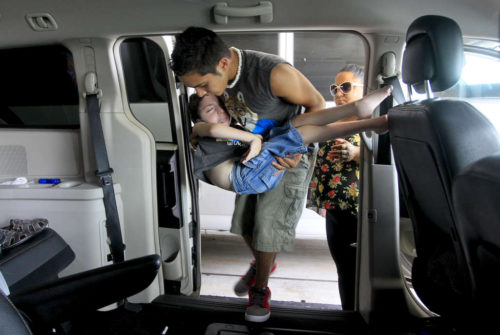
* * *
Source: Tampa Bay Times


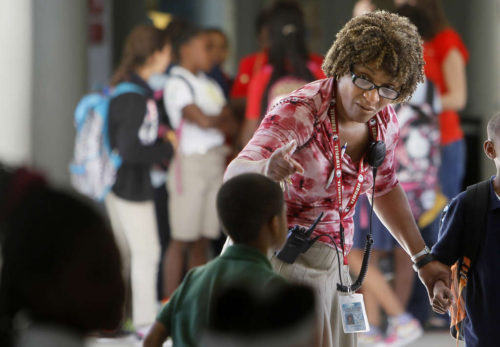




Typical Florida politics:
Social workers, behavior specialists, psychiatrists, panic buttons , ambulances and the police; sounds like a prison.
Current education cultivation of circumlocution, condescension, affectation , hypocrisy and liberal denial of reality.
After reading this one might pretend not to believe but after reflection aver , how could it be any other way?
How much money will they waste building castle’s in the sky ? How long can they deny the forbidden truth?